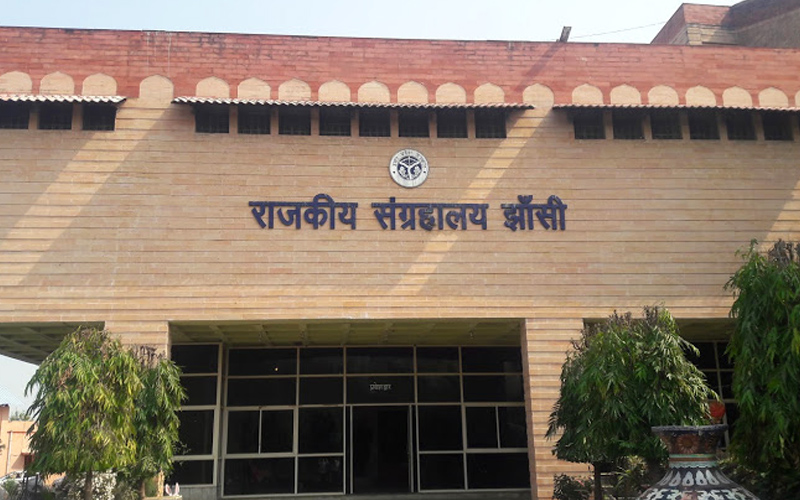JHANSI
Things to do in JHANSI
Jhansi Fort
Jhansi Fort

Situated on the hill named Bagira in the Indian state of Uttar Pradesh, Jhansi Fort is an architectural marvel that is also a must-visit attraction of Jhansi. It was built in the 17th century was made into a royal monument but later led to massive destruction in the First War of Independence that was against the British East India Company. Jhansi Forts houses several monuments like Baradari with astute and innovative architecture, Kal Kothari for the prisoners, temples dedicated to Ganesha and Shiva and also a museum that showcases the traces of the Chandela dynasty - clothes, weapons, and paintings. You can also visit the war memorial to see pay the tribute to martyrs, and the Rani Lakshmibai Park in memory of her role in the freedom struggle. Visit Jhansi Fort between 8 am to 6 pm with an entry charge of INR 5 for Indian citizens and INR 200 for Foreign Tourists.
Rani Mahal
Rani Mahal

Located on the southern part of Uttar Pradesh, Rani Mahal is one of the most historic monuments in Jhansi. This palace was built in the 18th century and was once the residential spot of Rani Laxmi Bai. This mahal has survived the Sepoy Mutiny during 1857 and was largely destroyed during the Indian Rebellion. Today, it has been converted into a museum for people to see the architecture of this ancient palace. Witness this two-tiered building which has six halls and the very popular Darbar Hall. Here you can feel the history of India, the rulers, traditions, and events that occurred during old times. Rani Mahal is a great place for people of all ages and gives you a lot of information and knowledge during your visit. Visit the Rani Mahal between 10 am to 5 pm (Monday Closed) with an entry fee of INR 15 for Indians and INR 200 for foreigners.
Rani Jhansi Museum
Rani Jhansi Museum

Rani Jhansi Museum is located inside the Jhansi Fort and one of the most important museums in the city of Jhansi. It provides an insight into the history and rich heritage of Jhansi along with the culture of the Bundelkhand area. It is dedicated to Rani Laxmi Bai and displays gallery on Laxmi Bai. You can see lots of her weapons and photographs since her childhood. Not only this but weapons, statues, photos, and dresses from Chandela dynasty are also showcased here. There are representations of many historical events & personalities in the earlier history of India. Visit between 10 am to 5 pm except Mondays and second Saturdays. The entry fees for Indians is INR 5 and INR 25 for foreign tourists. You have to pay INR 20 extra for the camera.
Cenotaph of Raja Gangadhar Rao
Cenotaph of Raja Gangadhar Rao

One of the most popular heritage places in Jhansi, Cenotaph of Raja Gangadhar Rao is one of the places to see in Jhansi. It is located at a distance of 2 km from Jhansi Fort. Cenotaph of Raja Gangadhar Rao is committed to Maharaja Gangadhar Rao was Jhansi’s King from 1836 CE - 1853 CE. Maharani Lakshmi Bai constructed this cenotaph after the king’s death. This building is a walled structure and has 2 domes. You can see scriptures inside the tomb and a beautiful garden with flowers.
St. Jude's Shrine
St. Jude's Shrine

St. Jude’s Shrine is a Roman Catholic Church which is located in the Cantonment area of Jhansi. It is considered one of the holiest spots in this city especially for Catholic Christians and is a famous attraction in Jhansi City. This shrine is devoted to St. Jude Thaddeus and late Bishop F.X Fenech started this devotion. You can hear from the locals that the bone of St. Jude is buried under this shrine. There is a kit of statues in the St. Jude’s Shrine that shows the story of Jesus Christ. Mother Mary has a separate shrine inside St. Jude’s Shrine premises. Moreover, there is St. Jude’s feast which is celebrated on the 28th of October each year and attracts a massive amount of devotees. You can visit at Sunday Masses at 6.30 am, 8 am and 6 pm.